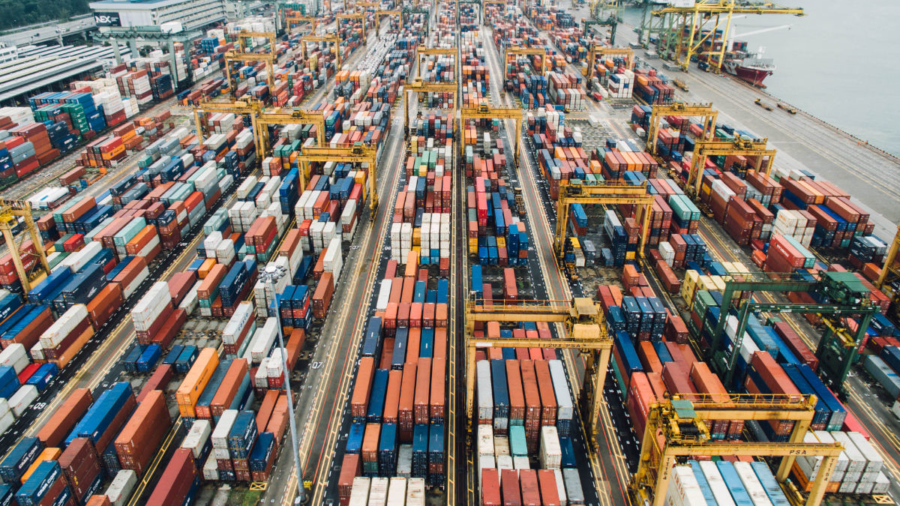COD, FCL, DM, and DT? To the uninitiated this alphabet soup is gibberish. However, to international shippers these acronyms have a clear meaning. Understanding shipping terms is essential when moving goods from one end of the world to the other. Of course, sometimes it’s not always say to remember what abbreviation means. Fortunately we’ve created this quick reference guide. We recommend bookmarking this page, just in case something slips your mind one day.
Understanding Shipping Terms Is Important
Before we dive into the terms and their meanings, let’s first look at what they’re important to know and understand.
Shipping goods is more complicated than just moving things from Point A to Point B. There are procedures and regulations to ensure goods arrive safely at a destination.
The terms we’ll be looking at are fundament for everyone involved in the shipping process. By understanding she terms miscommunication can be avoided and minimize errors in the supply chain.
Now, let’s look at the shipping terms every shipper should know.
1. Bill of Lading
A Bill of Lading is a legal document issued by a carrier or shipper providing shipment details such as the type of goods and quantity, freight rate, and destination. The document represents the agreement between the involved parties and guarantees exporters receive payment and importers receive goods. The Bill of Lading also serves as a receipt for a shipment.
2. COD – Change of Destination
Your goods have been loaded and on their way to their destination, but for some reason the destination needs to be changed.This is the time to request a COD, a Change of Destination. This request asks the container ship to discharge your container so it can be transported to a location different from the original booking.
3. CYCY – Container Yard to Container Yard
CYCY is the abbreviation for Container Yard to Container Yard. A container yard is where containers are stored until they’re loaded on a ship or after they’ve been discharged form a ship.
The CYCY explains where the responsibility of the carrier begins and ends.
4. DM – Demurrage
Demurrage is a fee charged by container lines when an imported container hasn’t’ been picked up in time. After a container has been discharged there’s a free period allowed for storing the container in the port. The container needs to be picked up by the end of the free period or you’l be charged for the number of days the coiner was left in port.
You can also incur demurrage fees if you have containers that cannot be shipped out. This could be due to, for example, customs problems.
5. DT – Detention
This is another fee that can be charged. This fee is charged if you’ve picked up your imported containers but haven’t returned them in time. You’ll be charged the extra number of days that you had the container. Detention fees can be charged in addition to demurrage fees if you have containers that were unable to be shipped because the containers hadn’t been returned din time.
6. FCL (Full Container Load) & LCL (Less than Container Load)
FCL is short for a Full Container Load. This means you have enough goods to fill an entire container.
LCL is the opposite and means that you don’t have enough goods to fill an entire container. In this instance your consignment is combined with other LCL consignments together to fill a container.
7. INCOTERMS – International Commercial Terms
When purchasing and selling goods, the goods will need to be moved from one location to their destination. The best way to do organize this movement is to negotiate the terms at the point of purchase. But for both parties to agree, they need to speak the same language. INCOTERMS facilitate that communication.
INCOTERMS, short for International Commercial Terms, is a series of pre-defined our standardized commercial terms published by the International Chamber of Commerce. INCOTERMS are intended to clearly communicate the tasks, costs, and risks associated with the transportation and delivery of goods.
8. Port Storage
When containers are discharged form a ship they’re moved to a container yard. The port provides a free period of storage. This is not to be confused with free period demurrage provided by the container line.
During the Port Storage period you have time to take care of customs clearance and transport your goods to a. warehouse or their final destination.
When ports lack storage space it will impact productivity and cause congestion. If you fail to clear your goods and move them in. time the port can charge you for Port Storage.
9. Rollover – Container Wasn’t Loaded on the Ship
This means your container didn’t make it onto the vessel. This could happen due to customs problems, overbooking, or vessel omissions.
Your shipment will be rescheduled and be placed on the next departing ship.
10. Stuffing & Stripping
This is probably the most straight forward term in the list. Stuffing is the process of loading a container prior to shipment.
Stripping, is, you guessed it, the process of unloading a container the it arrives at a port.
The More You Know
We hope you’ve found this list useful. Please bookmark this page for quick reference when you need a quick refresher.
To make the movement of goods easier for your business, consult the expert Best Global Logistics team.



